-
 Bitcoin
Bitcoin $101,898.5005
-0.75% -
 Ethereum
Ethereum $2,258.1125
-1.07% -
 Tether USDt
Tether USDt $1.0004
0.01% -
 XRP
XRP $2.0178
-2.93% -
 BNB
BNB $624.0243
-1.53% -
 Solana
Solana $134.3298
-0.90% -
 USDC
USDC $0.9999
0.01% -
 TRON
TRON $0.2675
-2.05% -
 Dogecoin
Dogecoin $0.1538
-1.96% -
 Cardano
Cardano $0.5482
-1.11% -
 Hyperliquid
Hyperliquid $35.5636
5.45% -
 Bitcoin Cash
Bitcoin Cash $453.4902
-1.66% -
 Sui
Sui $2.5134
-2.97% -
 UNUS SED LEO
UNUS SED LEO $9.1292
1.77% -
 Chainlink
Chainlink $11.8457
-1.60% -
 Stellar
Stellar $0.2312
-2.73% -
 Avalanche
Avalanche $16.9721
0.29% -
 Toncoin
Toncoin $2.7549
-3.82% -
 Shiba Inu
Shiba Inu $0.0...01081
-1.10% -
 Litecoin
Litecoin $80.8250
-0.71% -
 Hedera
Hedera $0.1374
0.21% -
 Monero
Monero $305.4827
-2.36% -
 Ethena USDe
Ethena USDe $1.0006
0.00% -
 Dai
Dai $1.0000
-0.01% -
 Polkadot
Polkadot $3.2085
-3.12% -
 Bitget Token
Bitget Token $4.0845
-3.13% -
 Uniswap
Uniswap $6.3353
-1.63% -
 Pi
Pi $0.5085
-0.70% -
 Pepe
Pepe $0.0...08913
-3.82% -
 Aave
Aave $232.7090
-0.58%
How to combine SAR support level and volume?
SAR indicator and volume can help identify strong support levels in crypto trading, enhancing decision-making when used together.
May 23, 2025 at 09:50 am
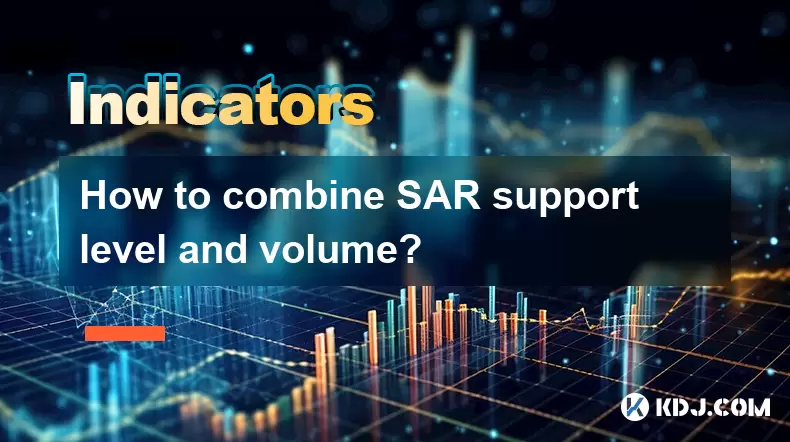
Introduction to SAR and Volume in Cryptocurrency Trading
In the world of cryptocurrency trading, technical analysis plays a crucial role in making informed trading decisions. Two important tools in a trader's arsenal are the SAR (Stop and Reverse) indicator and trading volume. The SAR indicator helps traders identify potential reversal points in the price trend, while volume provides insights into the strength of the market movement. Combining these two can enhance a trader's ability to spot reliable support levels and make better trading decisions.
Understanding SAR Indicator
The SAR indicator, also known as the Parabolic SAR, is a technical analysis tool used to determine potential reversals in the price direction of an asset. It is represented by dots placed above or below the price on a chart. When the dots are below the price, it suggests an uptrend, and when they are above the price, it indicates a downtrend. The key to using SAR effectively is to understand that it can help traders identify when a trend might be losing momentum and potentially reversing.
Importance of Volume in Trading
Volume is a measure of how much of a cryptocurrency is being traded within a specific timeframe. It is a critical indicator because it shows the level of interest in the asset. High volume during a price movement suggests strong interest and can confirm the validity of the trend. Conversely, low volume might indicate a lack of conviction behind the price movement, suggesting that the trend might not be sustainable.
Combining SAR and Volume to Identify Support Levels
To effectively combine the SAR indicator and volume to identify support levels, traders need to follow a systematic approach. Here's how you can do it:
Monitor the SAR Indicator: Look for the SAR dots to shift from above the price to below the price, signaling a potential reversal from a downtrend to an uptrend. This shift can indicate that the price might have reached a support level.
Analyze Volume at the Reversal Point: When the SAR indicator suggests a reversal, check the volume at that point. If the volume is high, it can confirm that the support level is strong and that the price is likely to bounce back from this level.
Confirm with Other Indicators: While SAR and volume can provide strong signals, it's always beneficial to confirm these signals with other technical indicators, such as moving averages or RSI, to increase the reliability of your analysis.
Practical Example of Combining SAR and Volume
Let's consider a practical example of how to combine SAR and volume to identify a support level in a cryptocurrency like Bitcoin (BTC). Suppose you are analyzing the daily chart of BTC/USD.
Step 1: You notice that the SAR dots, which were previously above the price, have now shifted below it. This suggests that the downtrend might be reversing, and a new uptrend could be starting.
Step 2: At the point where the SAR dots shift, you observe that the trading volume is significantly higher than the average volume over the past few days. This high volume indicates strong buying interest at this level.
Step 3: Given the high volume and the SAR reversal, you identify this point as a potential support level. You decide to monitor the price action closely to see if the price bounces off this level.
Step 4: If the price does indeed bounce back and start moving upwards, your analysis combining SAR and volume has successfully identified a strong support level.
Using SAR and Volume for Entry and Exit Points
Once you have identified a support level using SAR and volume, you can use this information to determine entry and exit points for your trades.
Entry Point: If the price bounces off the identified support level, it can be a good entry point for a long position. The high volume at the reversal point adds confidence to your decision.
Exit Point: As the price continues to rise, monitor the SAR indicator for signs of another reversal. If the SAR dots shift back above the price, it might be time to exit your position, especially if the volume starts to decline, indicating waning interest.
Managing Risks with SAR and Volume
While combining SAR and volume can help identify strong support levels, it's essential to manage risks effectively. Here are some tips:
Set Stop-Loss Orders: Always set a stop-loss order below the identified support level to limit potential losses if the price breaks through the support.
Position Sizing: Determine the size of your position based on your risk tolerance and the strength of the support level indicated by SAR and volume.
Continuous Monitoring: Keep an eye on the market conditions and be ready to adjust your strategy if the situation changes.
Frequently Asked Questions
Q1: Can SAR and volume be used to identify resistance levels as well?
Yes, SAR and volume can also be used to identify resistance levels. When the SAR dots shift from below the price to above it, indicating a potential reversal from an uptrend to a downtrend, and if this shift is accompanied by high volume, it can suggest a strong resistance level.
Q2: How often should I check the SAR and volume to make trading decisions?
It depends on your trading style. For day traders, checking the SAR and volume on shorter timeframes (like 15-minute or 1-hour charts) might be necessary. For swing traders, checking daily or weekly charts could be more appropriate.
Q3: Are there any specific cryptocurrencies where SAR and volume work better?
SAR and volume can be applied to any cryptocurrency. However, they tend to be more effective on cryptocurrencies with higher liquidity and trading volume, such as Bitcoin and Ethereum, as these assets have more reliable price and volume data.
Q4: Can I use SAR and volume for automated trading?
Yes, SAR and volume can be incorporated into automated trading strategies. Many trading platforms and software allow you to set up algorithms that use these indicators to execute trades automatically based on predefined criteria.
Disclaimer:info@kdj.com
The information provided is not trading advice. kdj.com does not assume any responsibility for any investments made based on the information provided in this article. Cryptocurrencies are highly volatile and it is highly recommended that you invest with caution after thorough research!
If you believe that the content used on this website infringes your copyright, please contact us immediately (info@kdj.com) and we will delete it promptly.
- Cryptocurrencies, Coingecko, and Trending Tokens: What's Hot Now?
- 2025-06-23 23:05:12
- Bitcoin, Meerkat, and Onchain Engagement: A New Era of Crypto
- 2025-06-23 23:25:12
- Cloud Mining, Bitcoin, and XRP: A 2025 Perspective
- 2025-06-23 23:25:12
- Neo Pepe Coin: Meme Crypto with Explosive Potential?
- 2025-06-23 23:45:12
- FUNToken: Decoding Past Trends and Getting Started in the Gaming Crypto Sphere
- 2025-06-23 22:25:12
- Eyenovia Goes Crypto: A HYPE Treasury and Potential Rebrand
- 2025-06-23 23:45:12
Related knowledge

Is it contradictory that the moving average system is arranged in a bullish pattern but the DMI shows a decline in trend strength?
Jun 23,2025 at 11:43pm
Understanding the Moving Average and DMI RelationshipIn cryptocurrency trading, technical analysis plays a crucial role in identifying potential trends and making informed decisions. Two of the most commonly used indicators are the Moving Average (MA) and the Directional Movement Index (DMI). While both tools aim to provide insight into market direction...

What is the significance of the gap formed by the gap opening not being filled within five days?
Jun 23,2025 at 09:42pm
Understanding Gaps in Cryptocurrency TradingIn the world of cryptocurrency trading, a gap refers to a situation where the price of an asset jumps from one level to another without any trading activity occurring between those two levels. This often happens over weekends or holidays when the market is closed, and significant news or events occur that impa...
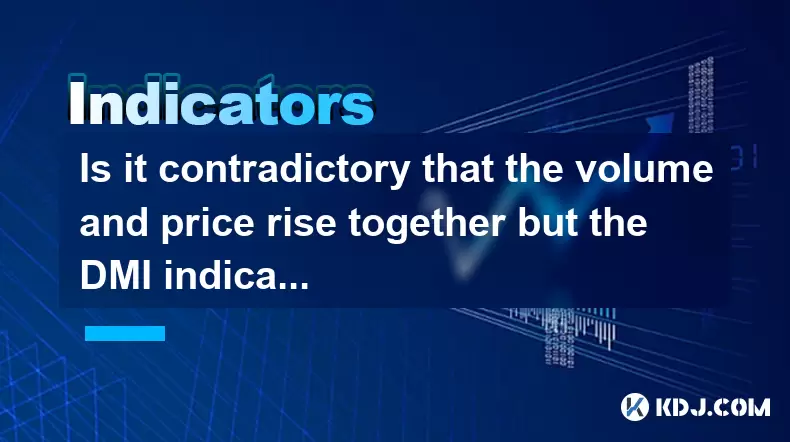
Is it contradictory that the volume and price rise together but the DMI indicator shows that the trend strength decreases?
Jun 24,2025 at 01:00am
Understanding the Relationship Between Volume, Price, and DMIIn the world of cryptocurrency trading, it is common for traders to analyze multiple indicators simultaneously to form a comprehensive view of market conditions. Volume and price are two of the most basic and widely used metrics in technical analysis. When both volume and price rise together, ...
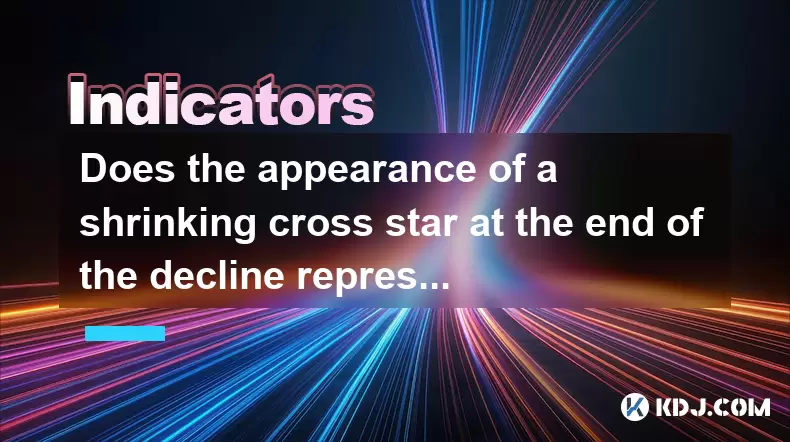
Does the appearance of a shrinking cross star at the end of the decline represent a signal to stop the decline?
Jun 24,2025 at 12:14am
Understanding the Shrinking Cross Star PatternIn the world of cryptocurrency trading, candlestick patterns play a crucial role in technical analysis. One such pattern is the shrinking cross star, which often appears at the end of a downtrend. This pattern consists of a candle with a small body, typically appearing after a series of bearish candles, and ...
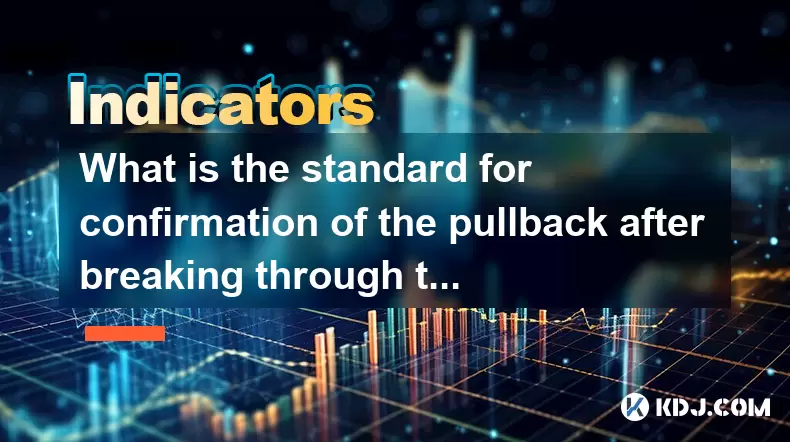
What is the standard for confirmation of the pullback after breaking through the neckline with large volume?
Jun 23,2025 at 11:28pm
Understanding the Neckline in Technical AnalysisIn technical analysis, the neckline is a critical support or resistance level that appears in chart patterns such as head and shoulders, double tops, and double bottoms. It typically connects two or more lows (in the case of a head and shoulders top) or highs (in the case of a head and shoulders bottom). W...
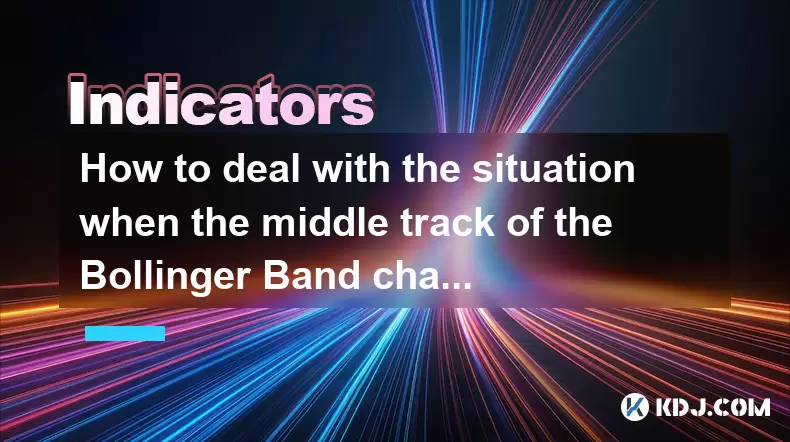
How to deal with the situation when the middle track of the Bollinger Band changes from support to resistance?
Jun 23,2025 at 11:22pm
Understanding the Bollinger Band Middle TrackThe Bollinger Band is a widely used technical indicator in cryptocurrency trading. It consists of three lines: the upper band, the lower band, and the middle track, which is typically a 20-period simple moving average (SMA). Traders often rely on the middle track as a dynamic support or resistance level. Howe...

Is it contradictory that the moving average system is arranged in a bullish pattern but the DMI shows a decline in trend strength?
Jun 23,2025 at 11:43pm
Understanding the Moving Average and DMI RelationshipIn cryptocurrency trading, technical analysis plays a crucial role in identifying potential trends and making informed decisions. Two of the most commonly used indicators are the Moving Average (MA) and the Directional Movement Index (DMI). While both tools aim to provide insight into market direction...

What is the significance of the gap formed by the gap opening not being filled within five days?
Jun 23,2025 at 09:42pm
Understanding Gaps in Cryptocurrency TradingIn the world of cryptocurrency trading, a gap refers to a situation where the price of an asset jumps from one level to another without any trading activity occurring between those two levels. This often happens over weekends or holidays when the market is closed, and significant news or events occur that impa...

Is it contradictory that the volume and price rise together but the DMI indicator shows that the trend strength decreases?
Jun 24,2025 at 01:00am
Understanding the Relationship Between Volume, Price, and DMIIn the world of cryptocurrency trading, it is common for traders to analyze multiple indicators simultaneously to form a comprehensive view of market conditions. Volume and price are two of the most basic and widely used metrics in technical analysis. When both volume and price rise together, ...

Does the appearance of a shrinking cross star at the end of the decline represent a signal to stop the decline?
Jun 24,2025 at 12:14am
Understanding the Shrinking Cross Star PatternIn the world of cryptocurrency trading, candlestick patterns play a crucial role in technical analysis. One such pattern is the shrinking cross star, which often appears at the end of a downtrend. This pattern consists of a candle with a small body, typically appearing after a series of bearish candles, and ...

What is the standard for confirmation of the pullback after breaking through the neckline with large volume?
Jun 23,2025 at 11:28pm
Understanding the Neckline in Technical AnalysisIn technical analysis, the neckline is a critical support or resistance level that appears in chart patterns such as head and shoulders, double tops, and double bottoms. It typically connects two or more lows (in the case of a head and shoulders top) or highs (in the case of a head and shoulders bottom). W...

How to deal with the situation when the middle track of the Bollinger Band changes from support to resistance?
Jun 23,2025 at 11:22pm
Understanding the Bollinger Band Middle TrackThe Bollinger Band is a widely used technical indicator in cryptocurrency trading. It consists of three lines: the upper band, the lower band, and the middle track, which is typically a 20-period simple moving average (SMA). Traders often rely on the middle track as a dynamic support or resistance level. Howe...
See all articles
























































































